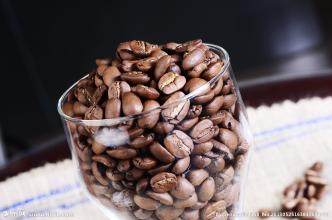The craftsmanship of Panamanian jade geisha? Introduction to the production area of coffee bean flavor description and grinding scale
The craftsmanship of Panamanian jade geisha? Introduction to the production area of coffee bean flavor description and grinding scale
Haines, a Swede, in 1924. Elliott founded Esmeralda Farm, which was not a coffee grower but a ranch. Forty years later, Daniel Lou in 1964. Mr. Bidarson's grandfather, Luther Ruffer. Mr. Bidarson bought Esmeralda Farm in order to have an old home after retirement, grandfather Luthor. Born in Sweden, Mr. Bidarsson was president of the Bank of America and director of United Nations Development, and his son, Mr. Bradasson, moved to Panama from California in 1973. He inherited his father's farm, changed most of the farm to grow coffee in 1987, and invested in machinery and equipment for refined coffee to create a brand in 1994. While Mr. Bidarson and his wife Susan started a formal business on the coffee farm, they also raised three children, Elligo (born in Philadelphia in 1966), Rachel (born in Sweden in 1967) and Danielu (born in Panama in 1974).
In 1996, Blaise and Rachel visited a farm for sale in the Haramijun area of the Bocketi Valley, and was attracted by the beautiful farm and immediately bought it. This is Esmeralda. Daniel Lou, the third son of Haramiqiong Farm. It is in this farm that Mr. Bidasson has grown Geisha coffee that attracts the attention of the coffee world.
La Esmeralda Manor has won 12 coffee competitions so far, and the highest bidding record for three times in online open bidding is US $21 in 2004, US $50.25 in 2006 and US $130 in 2007. Of course, other countries have also raced a pound of good coffee close to $50 (Brazil's CoE champion Fazenda Santa inflows in 2005) and Guatemala CoE champion El Injerto $80.20 in 2008, but you pay attention to the time point, that is, when La Esmeralda set a record price, there was no bid to surpass her before, but she will surpass others and say she is a record creator, no fluke! Take a look at her brilliant record:
It is not surprising that a geisha was born in the Kafa Forest, known as the treasure house of coffee genes. what is curious is why Ethiopia is not good at using the fragrance of a geisha and is willing to send it abroad to achieve others. In 1930, the official archives of Yiguo wrote: this is not a high-yielding variety, the bean body is thin and unhandsome, it tastes bad, but it can resist leaf rust and can be used to improve the disease resistance of other varieties.
It can be seen that Ethiopia noticed the superpower of geisha more than 70 years ago, which can be used as a "stallion" of improved breeds, but the flavor has not been valued. Today, unexpectedly, 70 years later, the geisha wants to reappear as the new overlord of the international cup competition, and even Ethiopian coffee experts wonder whether it was the underestimation of the fragrance of geisha at that time, or that the soil and water in Panama was different. as a result, geisha has the effect of "orange beyond Huaihe into trifoliate orange". It is worthy of further study by coffee chemists.

Important Notice :
前街咖啡 FrontStreet Coffee has moved to new addredd:
FrontStreet Coffee Address: 315,Donghua East Road,GuangZhou
Tel:020 38364473
- Prev

Species and flavor characteristics of Ethiopian coffee beans introduction to the grinding scale of varieties in taste producing areas
Introduction to the species and flavor characteristics of Ethiopian coffee beans the grinding scale of varieties in the producing areas of Ethiopian coffee coffee began to be grown in Taiwan Province of China at the end of the 19th century. At the same time, coffee came to Yunnan with the railway.
- Next

How to adjust the thick and thin coffee with manual bean grinder and how to beat the froth?
Manual bean grinder how to adjust the thick and fine coffee flower milk foam how to observe the coffee powder, high-quality coffee powder should be powdered and have a gravel feel. If the coffee powder is soft, like flour, it means the powder is fine. On the contrary, if the coffee powder feels tough and rough, it means that the powder is too coarse and the ordinary electronic bean grinding machine is based on the pre-set
Related
- Detailed explanation of Jadeite planting Land in Panamanian Jadeite Manor introduction to the grading system of Jadeite competitive bidding, Red bid, Green bid and Rose Summer
- Story of Coffee planting in Brenka region of Costa Rica Stonehenge Manor anaerobic heavy honey treatment of flavor mouth
- What's on the barrel of Blue Mountain Coffee beans?
- Can American coffee also pull flowers? How to use hot American style to pull out a good-looking pattern?
- Can you make a cold extract with coffee beans? What is the right proportion for cold-extracted coffee formula?
- Indonesian PWN Gold Mandrine Coffee Origin Features Flavor How to Chong? Mandolin coffee is American.
- A brief introduction to the flavor characteristics of Brazilian yellow bourbon coffee beans
- What is the effect of different water quality on the flavor of cold-extracted coffee? What kind of water is best for brewing coffee?
- Why do you think of Rose Summer whenever you mention Panamanian coffee?
- Introduction to the characteristics of authentic blue mountain coffee bean producing areas? What is the CIB Coffee Authority in Jamaica?

